In the spirit of the Christmas season, I decided to visit 4 spots across the Southland that have some fun, unique, and historic Christmas Traditions. This tour really put me in the holiday spirit.
Our first stop brings us to Santa Rosa Avenue in the city of Altadena. Or as it’s more commonly known as, Christmas Tree Lane, where they’ve been lighting up the trees along this street for over 100 years!
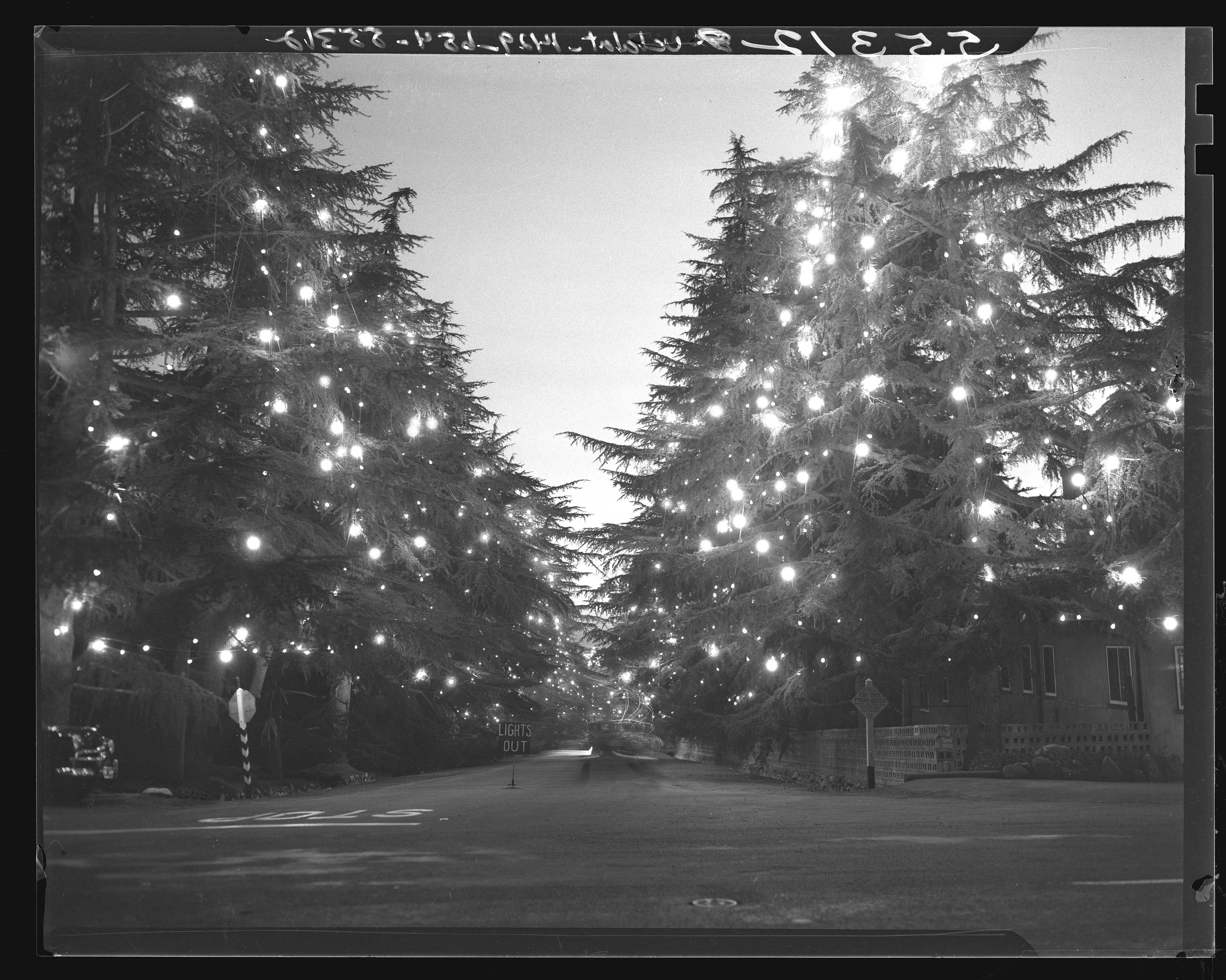
Photo Credit: UCLA Library Special Collections
The Deodar Cedar trees that line Santa Rosa Avenue were grown at the ranch of Altadena founder John Woodbury by his brother Frederick. John had had seen the trees during a trip to Italy and brought back a lot seeds; he planned to have the trees line the driveway from Pasadena up to his planned mansion.
The trees were transplanted along the planned driveway in 1885, where they now stand. Woodbury’s mansion was never built, but the trees flourished, and the driveway became Santa Rosa Ave.
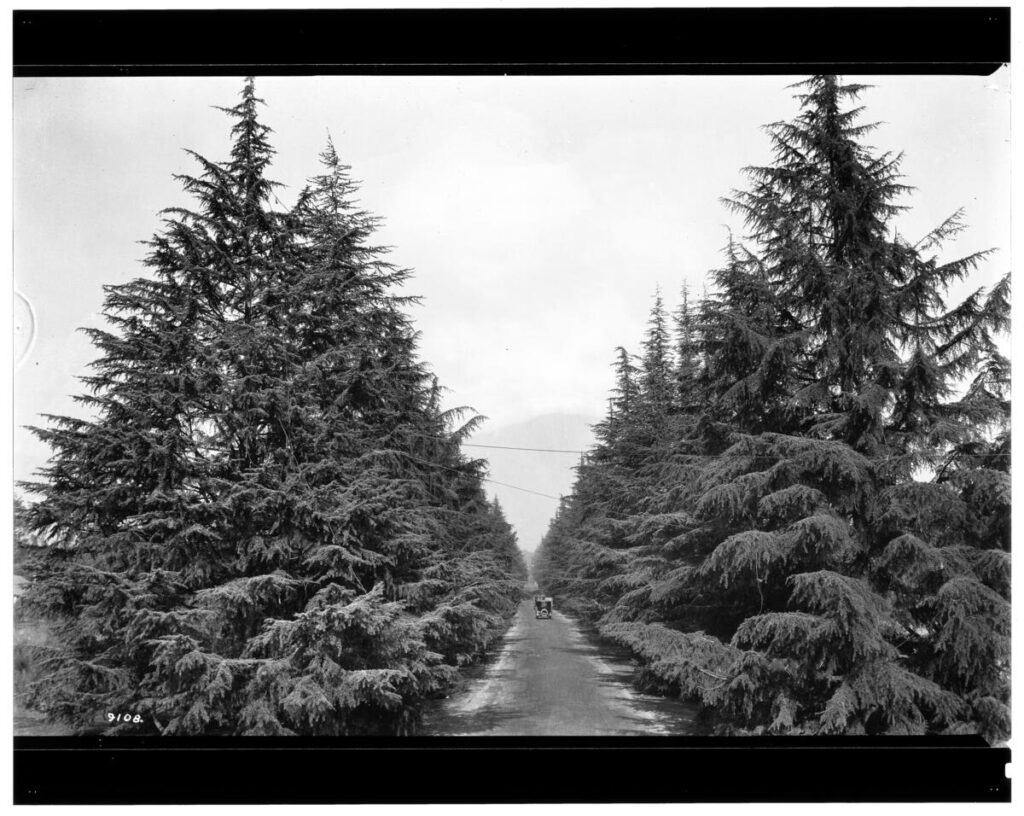
Photo Credit: USC Libraries and California Historical Society
In 1920, Altadena resident and Pasadena department store owner Frederick C. Nash organized the 1st tree-lighting. He wanted to use the festively decorated trees to attract shoppers to his department store and ended up creating a beloved annual holiday tradition.
In the early years, most people would stroll down the street in the soft glow of 10,000 electric lights. But it soon became an attraction that needed to be seen from a car, with an endless procession of cars becoming a nightly occurrence.
The tradition eventually became known as “Christmas Tree Lane” and was recognized as the oldest large-scale outdoor Christmas display in the world and was designated a California Historical Landmark and also placed on the National Register of Historic Places.
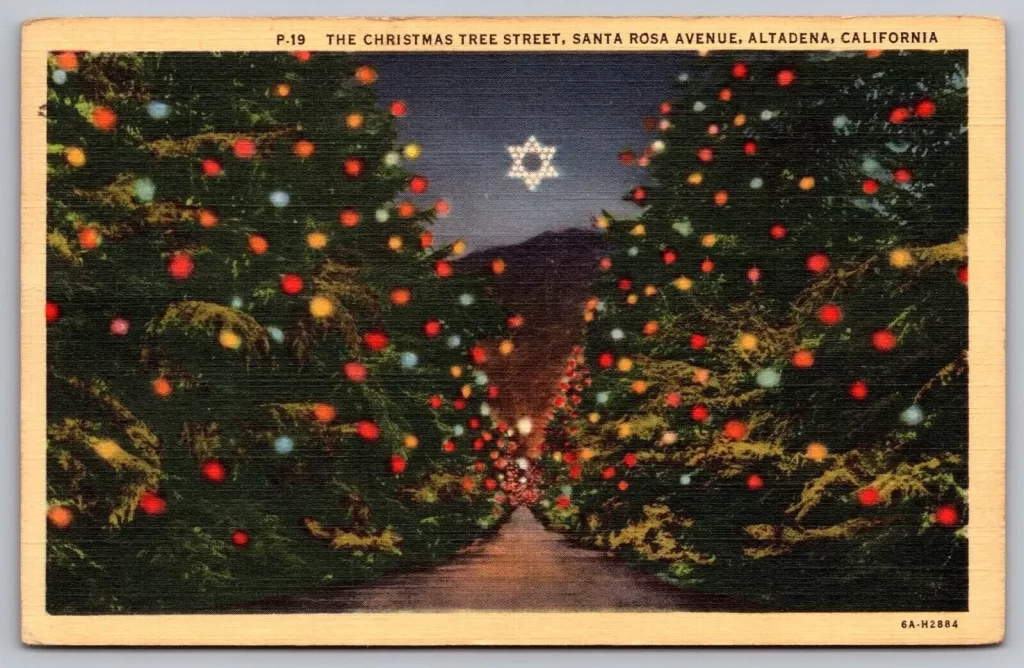
Since 1956, the tradition has been kept alive by the Christmas Tree Lane Association, a non-profit group of volunteers who put up over 10,000 lights on the 135 Deodar Cedar Trees between October and early December, and then take them down from February to April. They also maintain the lights and clear the brush underneath the trees.
Make sure to check the Christmas Lane Association website or Instagram for all the details of how you can make your way to Santa Rosa Ave to admire this 104-year old tradition that embodies both community and holiday spirit.
Our second stop brings us to Euclid Ave in the city of Ontario, where over over 60 years the story of the nativity has been illustrated along the median of this street through scenes that depict the birth and childhood of Jesus Christ.
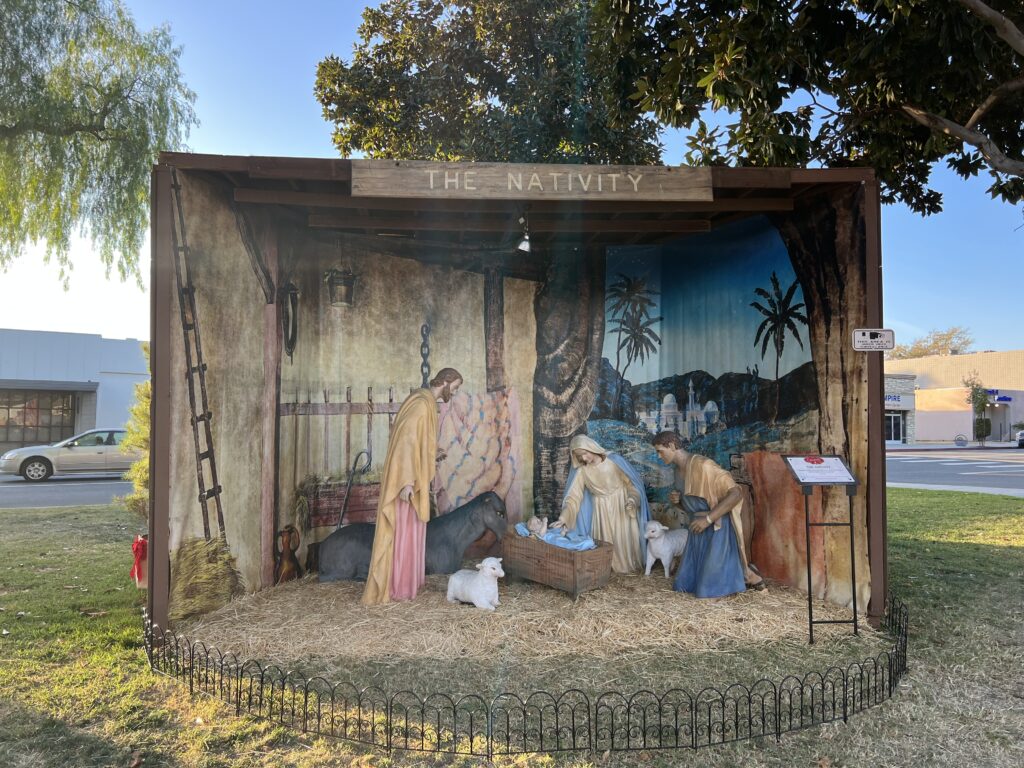
The idea for the Nativity came about as a result of a holiday carnival that was held in 1958, where all the rides and vendors just didn’t sit well with a group of local ministers, who felt that the true spirit of Christmas had been lost. They approached the city council about doing something more religious themed.
A group of business and community leaders commissioned Rudolph Vargas, who was a well-known sculptor of religious figures, to create the figures for first two nativity scenes, “The Nativity” and “Shepard’s Adoration” which were first displayed in 1959.
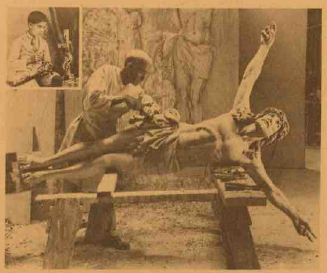
Photo Credit: Santa Teresita
In 1960 three more scenes were added, “No Room at the Inn,” “Arrival of the Wise Men,” and “Flight into Egypt.” “The Annunciation” and “The Shepard’s Vision” were added in 1961. Followed by “Jesus in the Temple” in 1962 and “The Holy Family” in 1963. “The Presentation” was added in 1965 and the collection was completed in 1968 with the addition of “Come Unto Me” and “The Light of the World.”
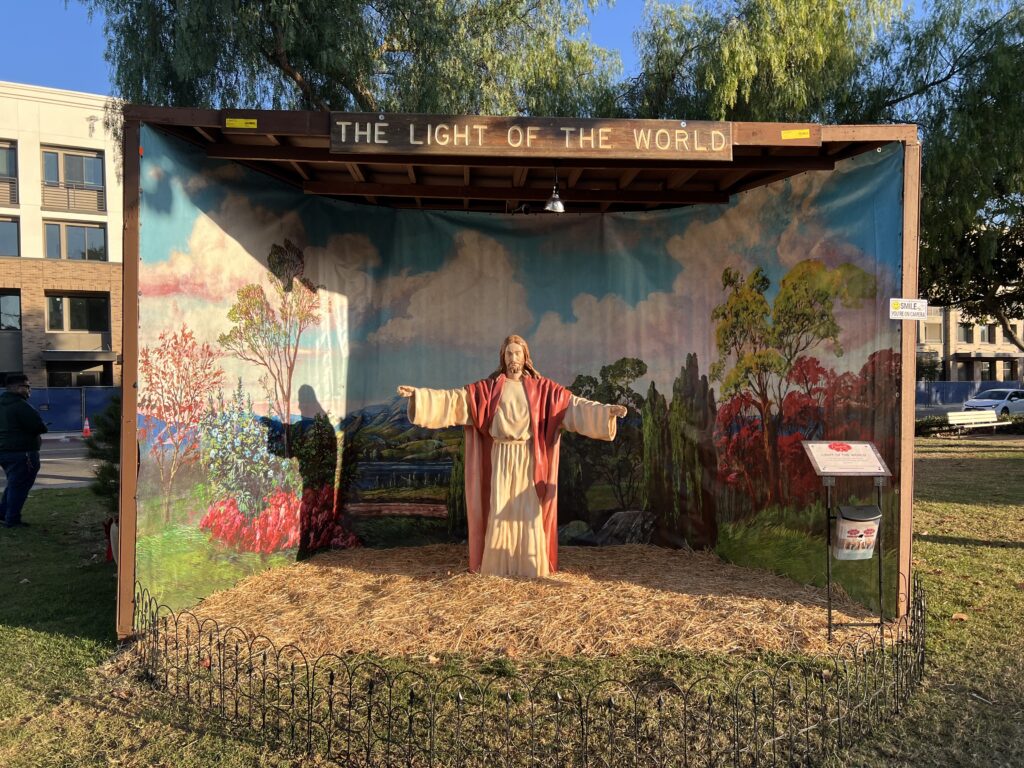
Over the years the displays have been the victims of age, weather, vandalism and theft. Rudolph Vargas repaired damaged sculptures and even remade a child figure that had been stolen.

Photo Credit: ABC 7
In the 1990s the display on public land did cause some controversy when a local atheist filed a claim against the city after he saw public workers setting up the display. The resolution to the issue is that the city rents the space on the median for the displays and no city money is used for the care or storage of the scenes.
That is handled by NOEL, or the Nativity on Euclid Landmark Committee, a group of dedicated volunteers that raises funds for the care of the displays.
In 2014 they commissioned a group of artists to restore and repair the 64 figures and the original 12ft by 24ft canvas murals that serve as backdrops, thanks to a $100,000 donation from an anonymous donor.

Photo Credit: LAist
When not on display, the scenes are stored in a climate-controlled setting and every year volunteers assemble and dismantle the scenes. The Nativity scenes go on display every year from Thanksgiving through the New Year.
Even if you’re not religious, you can definitely admire the craftsmanship that went into creating these scenes and admire the hard work and dedication of the volunteers that have kept this tradition alive for over 6 decades.
Our third stop brings us to the historic Mission Inn, which every year puts on a dazzling display of over ten million lights during the Festival of Lights, a yearly tradition that is over 30 years old.
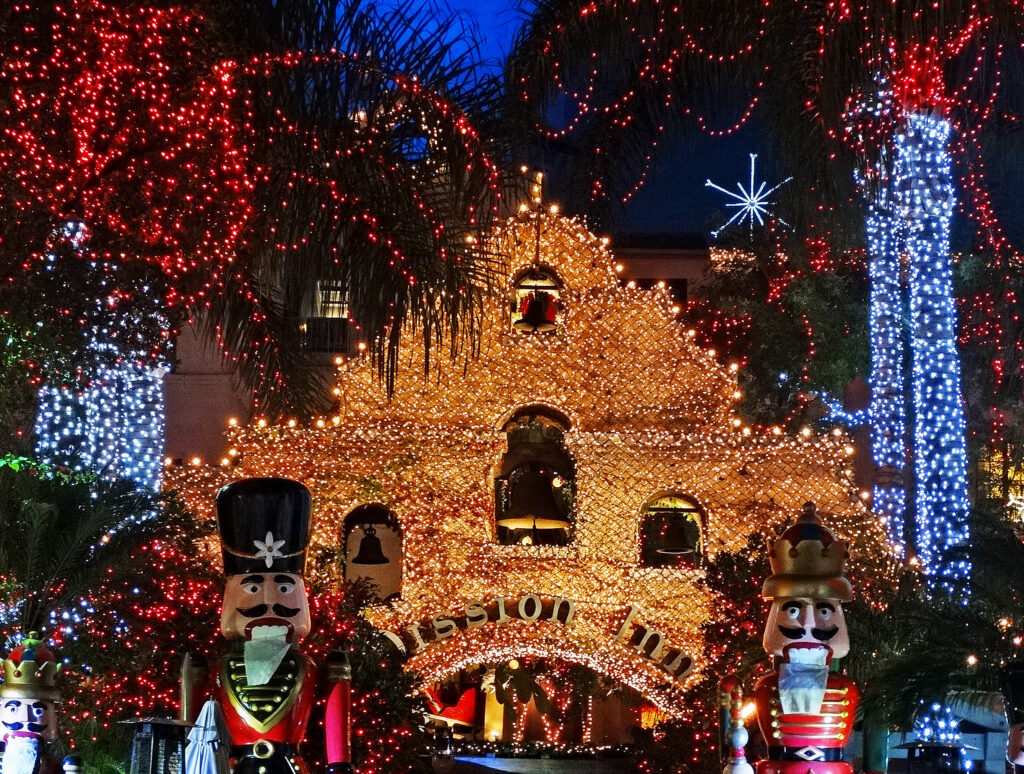
Photo Credit: CC BY-SA 2.0 inkknife_2000
Before diving into the history of the Festival of Lights, we need to get into a little bit of Mission Inn History. The Mission Inn Hotel began as an adobe boarding house built in 1876 by Christopher Columbus Miller. In 1880 his son Frank Miller bought the land and hotel from his father and by the early 1900s it had become a full-service hotel.
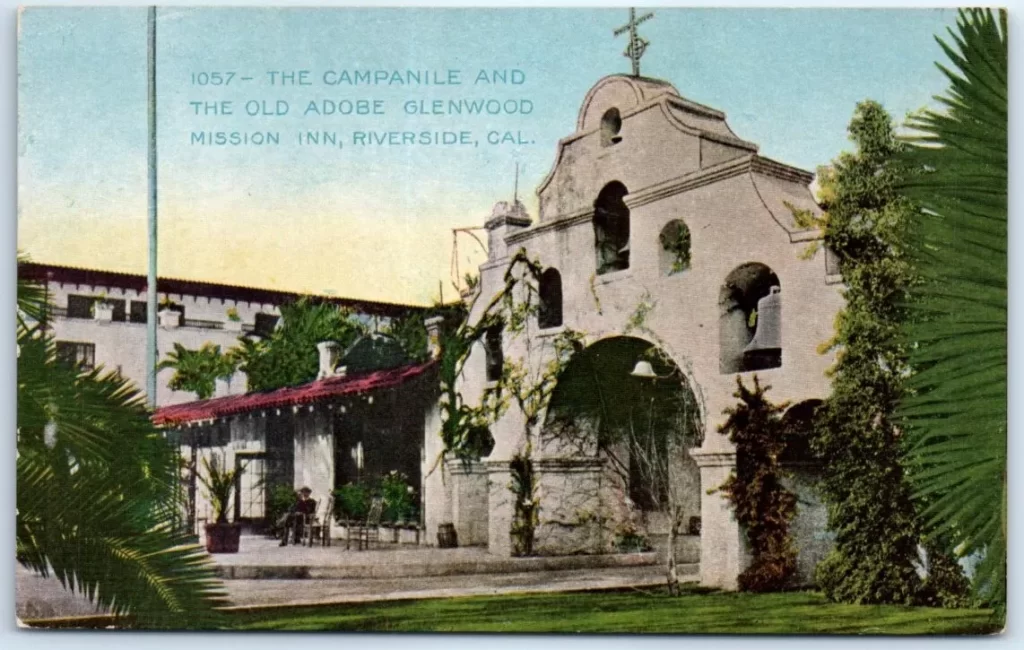
Frank Miller is not only responsible for the Mission-Revival style of the building, but he also created and patented a symbol to represent the hotel that eventually became the symbol of Riverside—The Raincross, but that’s a story for another day.
Throughout its history the hotel has hosted U.S. Presidents and celebrities and has changed ownership many times. It was in danger of being demolished until its current owners purchased the property in the 1980s, renovating it, and re-opening in 1992.
In 1993 the owners decided to decorate the property with lights as a way to celebrate the holiday season and attract visitors to the historic property. What started as a modest display of holiday lights has grown into a beloved spectacular event that features millions of lights and attracts thousands of spectators every year.
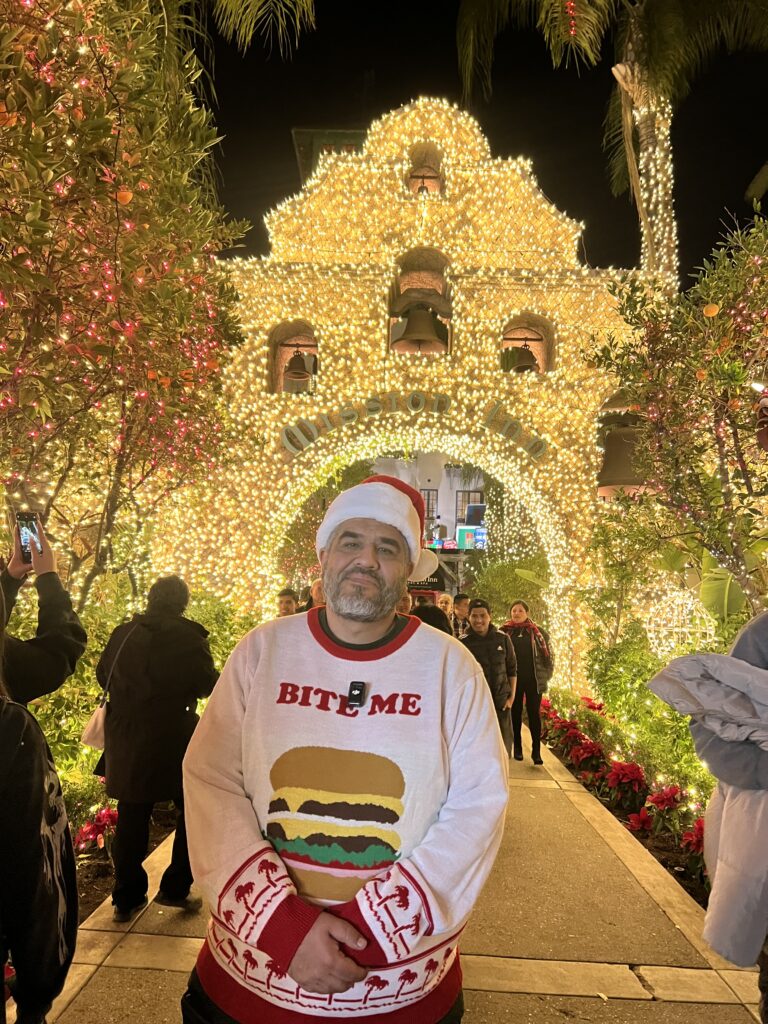
The event is the perfect place to take an evening stroll, take some great holiday pictures, and grab a treat from the vendors. Make sure to check the Mission Inn’s website or follow their Instagram account for all the details of the event.
One visit to the Mission Inn during the Festival of Lights and it’s easy to see why this has become such a beloved annual tradition that not only embodies the holidays, but also the community spirit of Riverside.
Our fourth and final stop brings us to La Mirada and to one of the newest Christmas traditions, the Griswold Family Christmas House.
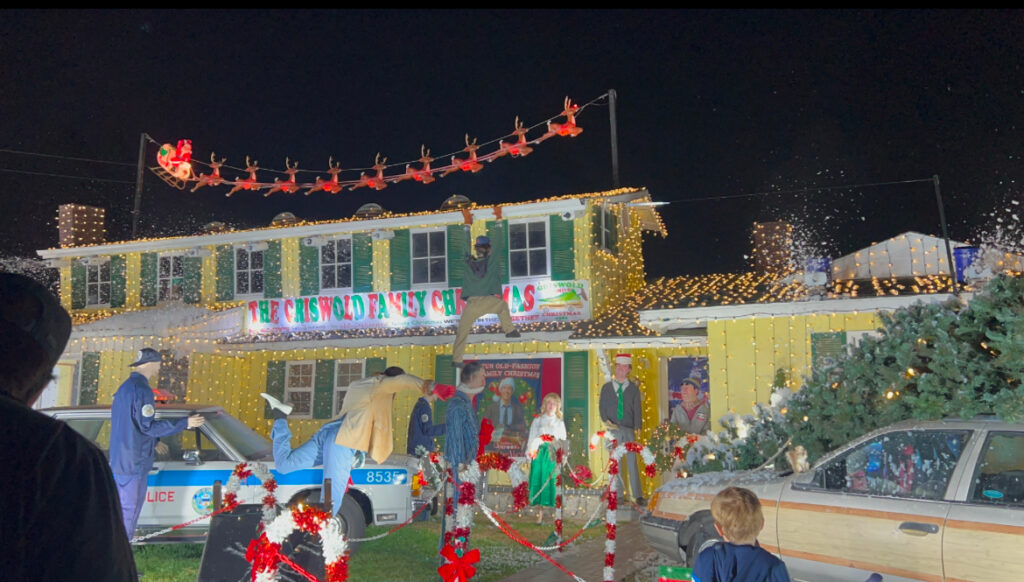
Since 2018, Jeff Norton has transformed his home into an elaborate display that celebrates the 1989 film “National Lampoon’s Christmas Vacation.”
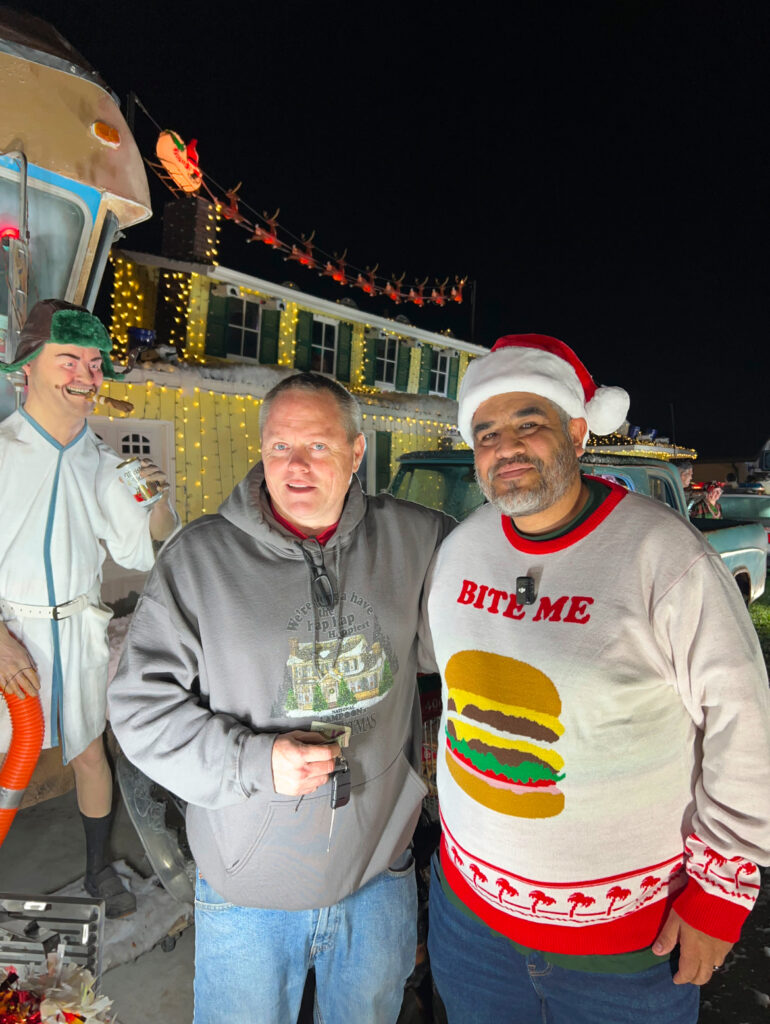
He started with an RV and a mannequin and after seeing the excitement it caused, he went out and bought three pallets of lights. Every year since then, he’s added more scenes from the movie complete with vehicles and mannequins dressed as characters from the movie. He’s even painted his home the same shade of yellow as the Griswold home.
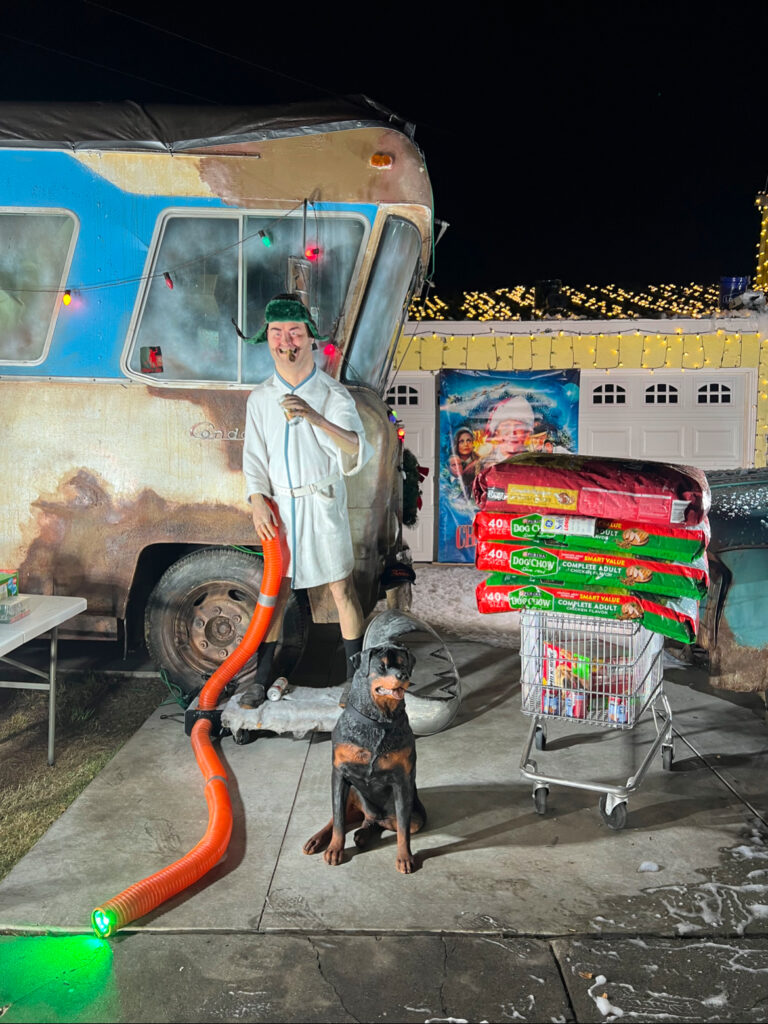
In 2021 he even added a fake 2nd story to make his home look more like the Griswold home, which caused some issues with the city’s code enforcement, but after receiving outpouring of support from the community and local news media coverage, the city relented.
Every year, thousands of people stop by to see Norton’s passion project and it’s turned into a beloved yearly tradition. Make sure to follow The Griswold Family Christmas House on Instagram for all the details on when you can see the display.
While this tradition is only 7 years old, it’s fast becoming a popular one that is not only a testament to its creator, but also to the community that loves and embraces this new tradition.

